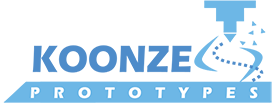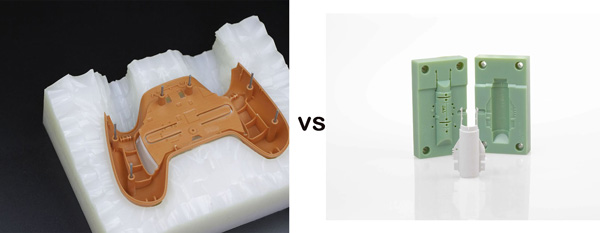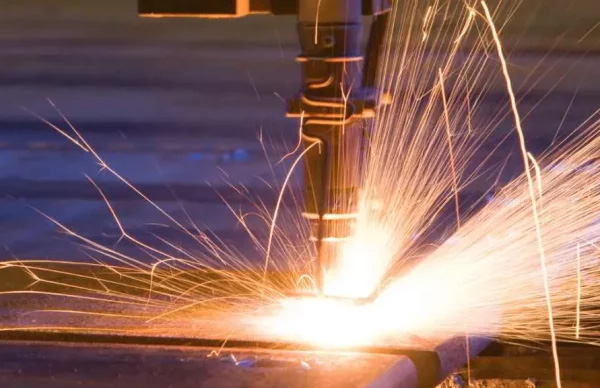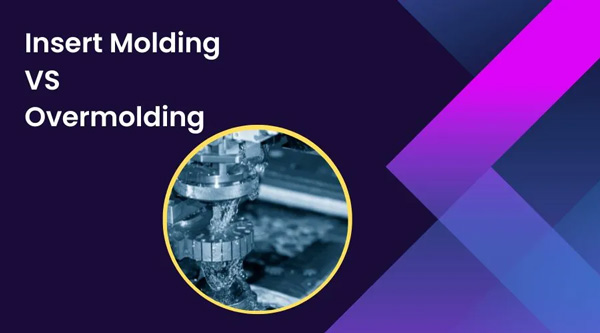Have you ever watched a CNC program machine work and wondered who tells it exactly what to do? It’s not a new case; beginners usually find it very difficult to understand CNC codes and machine tools.
But you don’t have to worry, because in this article, we will unfold every detail related to CNC programming that you should know. So, have a seat and just keep reading, so you can learn, apply, and bring your design idea to real life with confidence.
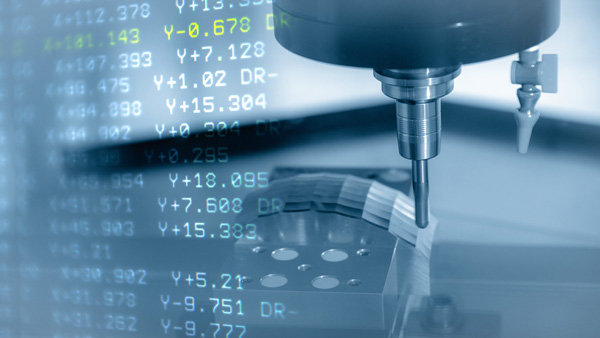
1) What is CNC Programming?
CNC programming, which stands for Computer Numerical Control programming, involves writing a set of step-by-step commands that guide a machine through every move it makes.
These commands tell the machine when to cut, drill, mill, or shape metal, plastic, and other materials with impressive precision. You might think of it as drafting a meticulous recipe; instead of baking a cake, you are directing a robot to carve out real-world parts.
With CNC code, you can decide how fast the tool spins, how deep each pass goes, and when to swap bits or clamp a new workpiece. That level of control is why industries ranging from aerospace to auto factories count on it every day.
The main purpose never changes: to produce clean, repeatable parts in a fraction of the time traditional machining would take. The good news is, once you grasp the basics, the job doesn’t feel as intimidating as it first appears.
Still wondering, is CNC programming hard? Don’t worry, let’s clear up what those mysterious lines of CNC code mean now.
Essential CNC Programming Codes You Need to Know
Wondering, “What programming language is used in CNC?” It’s mainly G-code and M-code. The machine is told when to move, when to cut, at what speed to operate, and other functions turn on or off.
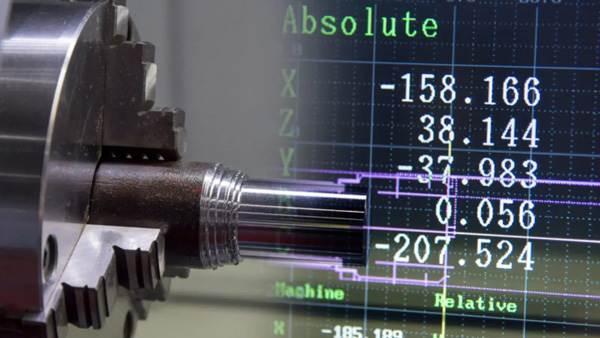
G00 – Rapid Positioning
This instruction prompts the machine to move the tool to a specific area at full speed. While it is time-efficient, it needs to be used more wisely.
G01 – Instruction Linear Interpolation
G01 commands for the tool’s movement in a straight line, provided there’s controlled speed cutting. This instruction helps in organised cutting movements.
G02 – Circular Interpolation (Clockwise)
With G02, the tool engages in smooth clockwise arcs while cutting. Most of the time, it is used while shaping round areas such as circular edges, holes, and curves.
G03 – Circular Interpolation (Counterclockwise)
This code is similar to G02 but handles counterclockwise motion. It’s utilised for arcs or circular figures only in the reverse direction.
G17 – XY Plane Selection
With this command set, G17 tells us that we are now setting the working plane on XY/Z axis, thus placing a horizontal cut surface, considering you are facing downwards relative to the rest position, which is common during milling operations.
G18 – ZX Plane Selection
This command shifts the focus of cutting from the ZX plane, one side on the vertical facing side walls, moving parts cut sideways through vertical sections.
G19 – YZ Plane Selection
With G19, the cutting plane is set to YZ for scheduling operations on the front or rear face of a part. The top face is not considered.
G20 – Use Inches
This code will only be applicable for measuring in inches. So, it is better to use it when your measurements are in inches rather than millimeters.
G21 – Use Millimetres
Most CNC jobs are measured in millimeters. G21 sets the unit to this. Make sure to always check if your drawing matches its system before setting this command.
G28 – Return to Home
For safety, this code reverts the tool position back to zero or home, reducing risk at the end of a job.
G90 – Absolute Positioning
All movements done after issuing this command will be based on one fixed location. It makes Z90 very beneficial with consistent cutting.
G91 – Incremental Positioning
This code uses the current position as a reference point for new moves, as every step made depends tool’s previous position, offsetting the base point from which movement will initiate.
M00 – Program Stop
M00 stops the operation completely. The system will remain inactive until you start it over. You can say it’s like a full stop for the operation.
M01 – Optional Stop
This optional stop will only occur when the button to the optional stop feature is activated. It is beneficial for monitoring progress during machining, as it cuts off the need to fully stop the machine.
M02 – Program End
M02 stops the CNC program. Once the code is read, what happens is that the machine stops all movements. Yes, and the program will not continue working unless started again.
M03 – Spindle On (Clockwise)
Commonly used in most of spindle spindle-mounted tools requiring clockwise rotation during machining, M03 starts rotating the spindle in the clockwise direction.
M04 – Spindle On (Counterclockwise)
Reverse rotation needed spindle or tool commands are covered under this command, which is designated as counterclockwise movement of the spindle.
M05 – Spindle Stop
This command puts an end to operations from the spindle attached to the rotary cutter’s face. And, it puts an end to the cutting process or suspension till new part/tool insertion.
M06 – Tool Change
M06 orders the CNC machine to change the tool. You should know that for automatic or manual changes, it works with a tool number, for example, T01 or T02.
M08 – Coolant On
To aid in parts and tooling from overheating during spinny engagements and shearing chips, coolant flows are set to be turned on via this coding.
M09 – Coolant Off
M09 issues a command to stop the coolant flow. This occurs after a tool has stopped cutting, or at any time during the execution of the program when the coolant is no longer required.
2) How to Write Your Own CNC Code
It may look challenging from the outside, but learning to write your personal CNC code is very possible, even for novices. It requires some simple steps and basic knowledge of a few things. Once you get used to it, creating a program for CNC feels straightforward.
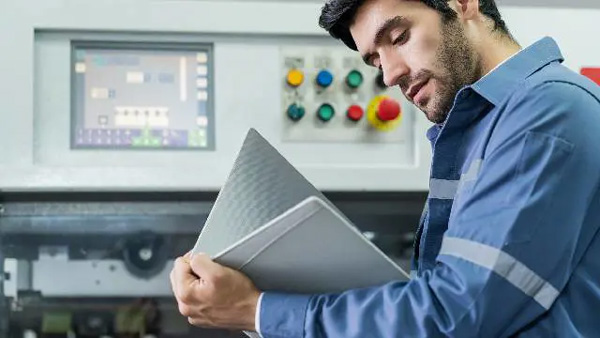
We can simplify the process as follows:
Step 1: Analyse the Drawing
Your part drawing or CAD file possesses valuable information that can help guide your writing of CNC code. It will show you the dimensions, contours, and other features of the part you wish to manufacture. Before that, make sure that you understand the measurements, cutting strategies, o-ring sizes, and tools needed.
Step 2: Select Your Coordinates
Each CNC machine has x, y, and z axes. Therefore, determine where your component will rest on the machine. As a rule of thumb, you place the zero point (which is called the origin) at either the corner or centre of the part that helps your machine where it should start the process.
Step 3: G-Code And M-Code
The time to actually write code has arrived. Make use of G-code for controlling movements (motion) while M-code handles functions such as spindle coolants. Here’s an easier illustration:
G21; Set units to millimetres
G90; Use absolute positioning
G00 X0 Y0; Move to starting location
M03; Spindle On
G01 X50 Y50 F100 ; Execute cut
M05; Spindle stop
M30; End of program
As illustrated above, every command controls the actions of the machine. Likewise, your commands must be concise and organised.
Step 4: Testing with Simulation
Use simulation software to run the program before executing it on a physical machine. This will highlight any potential issues that could arise during actual execution. Well, if the simulated part appears correct, you can proceed without worries.
Step 5: Run the Code
Input your code into the CNC and start by performing a dry run, simulating cycles without material removal. After confirming that all steps operate as expected, proceed with cutting the designated material.
Crafting your own computer numerical control programming code may feel daunting at first glance, but excelling in this skill will prove invaluable in time. And coding offers total autonomy over how parts are manufactured, no matter if you are new or a professional in CNC programming.
3) Different Types of CNC Programming Techniques
Every CNC project has its unique challenges, skills required, tools required, and complexity of the parts involved. Well, there is no universal method that fits well with every situation. Yes, different strategies offer their own particular benefits specific to certain scenarios; it all depends on the approach taken.
To cope with the situation, we can categorise methods as manual programming, computer-aided manufacturing (CAM) based programming, and conversational programming.
i) Manual CNC Programming
The most fundamental approach to CNC programming is known as manual CNC programming. To execute a task, G-code and M-code commands would need to be written line by line for each action the machine performs.
This strategy works exceptionally well when you’re working with simple geometric shapes such as arcs or holes. When applied to more complicated designs, however, this approach becomes cumbersome due to a lack of software assistance, and hand precision heavily relies on the individual’s skill level.
- Ideal for:
- Simple linear operations and basic geometrical figures
- Students are just starting out in hands-on learning sessions.
- Quick manual edits and one-off adjustments
- Gaining strong control over machine behaviour
Merely strengthening fundamentals provides beginners with broader knowledge that applies beyond theory, but it does have limitations, as errors compound quickly without any validation checks.
ii) Computer-Aided Manufacturing (CAM)
With its CNC programming capabilities, CAM goes a step further to fully automate the process. Through software such as Fusion 360 or Mastercam, you can create a 3D model using CAD, and the CAM system will automatically generate the corresponding toolpaths based on that geometry. Well, the code for CNC machining is produced automatically.
This method guarantees precision in manufacturing complex parts like those with curves, contours, or three-dimensional surfaces. Before actual machining begins, simulations of tool movements are performed, which allow for early detection of possible errors. Thus, it minimises the chances of material wastage.
- Ideal for:
- Sophisticated geometrical complexities
- Fast and accurate machining
- Mass production or repetitive tasks
- Reducing human error through pre-emptive simulation
CAM software is widely used in professional machine shops due to improved turnaround time, targeted quality control, and design flexibility.
iii) Conversational Programming
G-code is not required to be formed manually, thus leading to a new user-friendly method called conversational programming. Inputs, including tool selection, measurement parameters like radius or length, and depth of cut, are entered via the control terminal into the machine, which then generates code automatically.
This approach is favourable for short runs or fast jobs, as well as for new users understanding CNC principles while remaining at floor level.
- Ideal for:
- Novice users lack technical skills.
- Low-volume production or prototype machining.
- Optimising setup and training time.
- Shops that do not have sophisticated CAM software accessibility.
Conversational programming simplifies workflow automation. Well, it offers intermediate skill levels between fully automated systems and manual systems. One more good thing is that it is fast, intuitive, and helps with the most fundamental tasks that require short turnaround times.
4) What Types of Programs Are Available for CNC?
In CNC programming, as with many other tasks, having the right software makes your work easier. There are several programs available to ensure the effective planning and execution of CNC programs. The most common ones include CAD, CAE, and CAM.
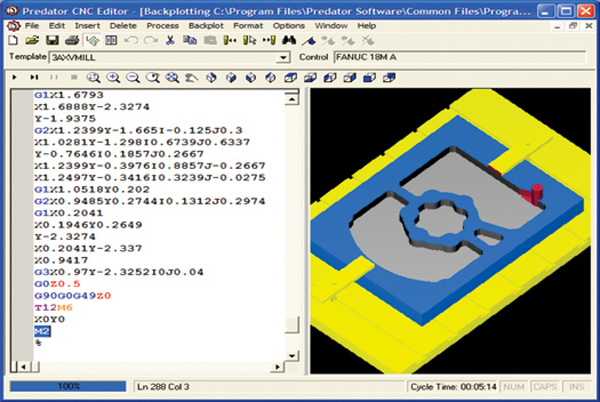
- a) CAD (Computer-Aided Design)
This process starts off with CAD. With CAD software, you can draft and design a part you want to create. This can be done both in 2D and 3D formats, where you have to pay attention to every minute detail like shapes, dimensions, and features.
It’s ideal for turning your idea into a clear visual plan. Whether you’re designing simple brackets or complex mechanical parts, CAD helps you get it right from the start.
- b) CAE (Computer-Aided Engineering)
With CAE software tools, you can analyse various parameters before actual fabrication is done: stress analysis, heat analysis, as well as performance simulation analysis. These parameters determine if your design will support the intended function or not. Alright! You’ll save time and money by fixing the errors.
- c) CAM (Computer Aided Manufacturing)
CAM systems literally transform your CAD design into actual machine processes. It produces the necessary toolpaths and also creates the CNC code, which the machine will use during operation. Most importantly, you do not have to spend time writing lengthy lines of code manually.
“How do you program a CNC machine?” is most certainly a common question among novices; in this case, CAM would be the simplest answer one could get. Since it streamlines the process, there is less chance for mistakes and mishaps when using CAM.
How to Choose the Right CNC Programming Type for Your Project
There’s no one-size-fits-all approach when it comes to CNC programming. Every technique is bound to have some factors that determine its usefulness: the detailing of a component, pieces quantity, the available equipment, and your personal experience.
Each method of programming has its advantages, and understanding these can help us make wise choices.
- Manual programming when;
For straightforward tasks like circles or holes where utmost control is needed, manual programming works best. While it’s simple to let the machine do the work, there’s also significant learning value in doing it yourself, especially for beginners trying to understand CNC basics.
That said, for intricate designs where lines and shapes build on each other, it is inefficient to run the code without oversight.
- CAM (Computer-Aided Manufacturing) when;
Tools and parts with curves or surfaces require CAM (Computer-Aided Manufacturing). Works with CAD models; unlike humans, machines generate toolpaths automatically, which makes everything faster and more precise.
CAM is best for high-volume production or when you require consistency and precision in your work. Well, if you already use CAD software, CAM is your next step to streamline your workflow.
- Conversational programming when;
You can choose conversational programming if speed and short-term output are a priority. It is best suited for quick tasks, small businesses, and beginner work that does not require an entire CAD model.
Yes, you can easily enter basic parameters and let the machine do the rest. While it may not work on very deep designs, it has the ability to manufacture parts quickly.
- Simple and Quick: How to Decide
- Choose manual programming to learn, control everything, or work on more basic shapes.
- Choose CAM programming for more complex parts that need accuracy or for running them multiple times.
- Choose conversational programming when the job is simple, needs to be done fast, or ease of use is prioritised.
Many shops will mix these techniques based on what project they’re working on. The best CNC programmers know how to pick the right tool for the job, so you finish everything with minimal mistakes and maximum efficiency while saving time, every time.
5) Get a Free CNC Machining Quote from Koonze Model
CNC programming usually involves a digital design that you want to translate into a real-world object. At Koonze Model, we are a well-known CNC machining company with great accuracy, timely delivery, and customer support.
Koonze Model is more than able to handle precision parts rapid prototyping as well as small batch productions.
- Why Choose the Koonze Model?
Let’s look at some of the most common reasons designers hold the Koonze Model
- a) Advanced CNC Technology: Our 3-axis, 4-axis, and 5-axis CNC machines are the best in the class. All these allow the manufacturing of intricate and simple components whilst maintaining a high system smoothness and dimensional accuracy.
- b) Precision You Can Trust: With their tight tolerances of ±0.01 mm, Koonze assures every piece will be made exactly to your design. You know it is essential for systems that need a perfect fit to perform precise functions.
- c) Fast Prototyping and Small-Batch Production: The primary focus on rapid turnaround time makes us specialised in serving industries, for example, aerospace, automotive, robotics, consumer products, and medical devices.
- d) Wide Range of Materials: Pick from various options like aluminium, stainless steel, brass, titanium, and engineering plastics. Whatever your project is about, it will hopefully be available.
- e) Helpful Engineering Support: Koonze’s specialists can look through your files at no cost and recommend changes that make the design more efficient in terms of spending while still maintaining good quality standards.
- How to Get Started
To access CNC quotes, all you have to do is follow Koonze’s steps:
- Provide your CAD documents or detailed schematics for preliminary discussion.
- Add a free quote option and expect feedback within half a day.
- Place an order and relax as their team does all the work.
6) Further Reading: How to Master CNC Programming for Beginners
Don’t worry if this is your first time dealing with CNC programming. Everyone has to start at some point, and the only requirement is having the right steps and tools. Well, with effective planning, you can learn and build genuine skills fairly fast. Let’s simplify the entire process down into practical, bite-sized pieces.

- Start with the Basics
Understanding what a computer literally spells out for itself as CNC (Computer Numerical Control) isn’t rocket science, but ignoring basic principles can make it a daunting task. So, you cannot skip any foundational concepts, such as G-code, which happens to be the primary language of most tasks done on CNC machines.
Although each task has its unique ways of execution, starters begin with G00, G01, G02, and G03 commands quite often. As we discussed, there are also M-codes, which deal with machine functions like spindle starts or coolant toggles.
- Use Free Learning Resources
Online courses, videos, or guides have made everything much easier than ever before. Anyone willing to learn can check out YouTube or CNC blogs for simple tutorial videos that walk you through every essential step. Focused revision ensures efficient command mastery, especially when learned practically during machine operations.
- Practice with CNC Simulators
We all have heard that practice makes a man perfect! Reading is good, but it becomes more beneficial when you put your knowledge into practice. With the help of simulators, trainees can take full advantage.
Simulator software enables learners to code and try execution that takes place in a simulated environment, which implies no costs, risk is low, and there’s a lot to learn. Safely test your programs using free simulators such as NC Viewer or GWizard Editor.
- Understand CAD and CAM Tools
In moving further along the course, you will want to familiarise yourself with CAD (Computer-Aided Design) and CAM (Computer-Aided Manufacturing) Software. While CAD allows for pre-design works, CAM transforms these designs into G-code.
Generally speaking, one of the most powerful beginner tools that offers both features is Fusion 360 – an all-in-one program.
- Keep Practicing and Stay Curious
Each piece of code written increases skill level. Start with basic commands, squares alongside circles, before progressing onto more intricate work, including advanced shapes and thorough detail designing. You can mix complex pieces with the simple ones between complex pieces. Well, nothing is impossible; all can be done with some practice and effort. Best of luck!
7) FAQs
1. What is CNC programming used for?
CNC programming controls machine lathes and mills. Using digital information files, it cuts materials like wood or metal according to predetermined designs, telling the machines how they should move during cutting.”
2. Is CNC programming hard to learn?
It’s easier if you build on foundational knowledge first, such as learning G-code and practising with simulators. With the right methods and consistency, it becomes attainable for novices.
3. Do I need to know coding to learn CNC programming?
No, not really. G code used in CNC programming is much simpler than regular computer coding, so basic knowledge of computers is sufficient, along with readiness for a systematic approach towards learning.
8) Summary
Turning digital models into physical parts requires significant precision. CNC programming involves creating the code needed to control machines that cut and shape materials. For newbies, starting out with G-code simulation is beneficial alongside CAD/CAM tools.
When it comes time to get your CNC program machined, we suggest Koonze Model as we provide expert support while offering precise machining for every CNC programmer. So, wait for what? Contact Koonze Model right now!
